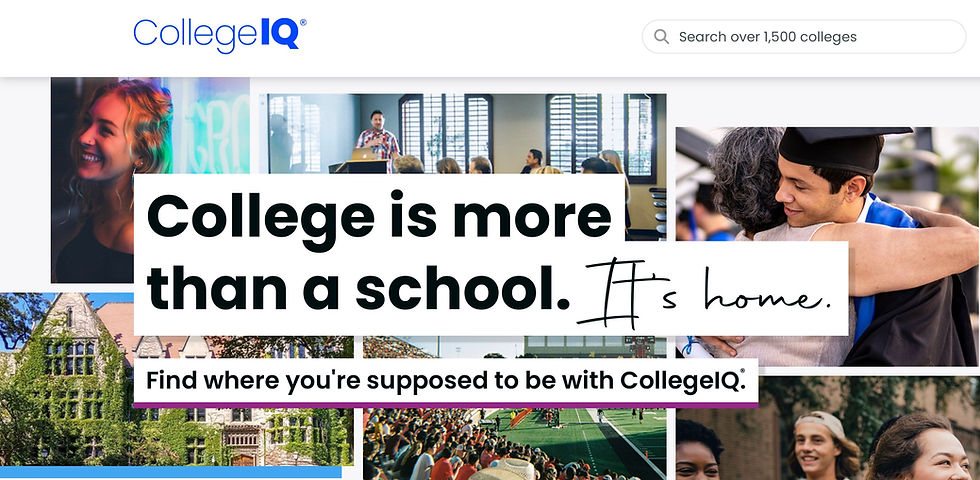Studying in the U.S.: Navigating the Challenges for Spanish Students Seeking Financial Aid
- meginwolfman
- Feb 21
- 3 min read

For many Spanish students, the choice of where to attend university is a deeply personal one. Spain is home to some of Europe’s oldest and most respected institutions, offering world-class education in fields like business, law, engineering, and humanities. For students seeking a top-tier education within a familiar cultural and linguistic environment, Spain’s universities are an excellent option.
But some students decide to look beyond Spain’s borders because they’re seeking a different academic structure, broader career opportunities, or access to fields that are more specialized abroad. The U.S. stands out as a destination for those who value a flexible, interdisciplinary education, strong alumni networks, and deep extracurricular involvement.
Yet, for students in Spain who have made the decision to apply to U.S. colleges, one of the biggest barriers is financial aid. Unlike the Spanish and European systems, where tuition is often subsidized or fixed at more predictable rates, U.S. college costs can feel impossible to navigate—let alone afford.
The Challenge of Affording a U.S. Education
According to the National Center for Education Statistics (NCES), the average tuition at a private U.S. university is around $44,000 per year, while out-of-state tuition at public universities averages $26,000 per year (NCES, 2023). And that’s before factoring in housing, meals, flights, and health insurance.
For a Spanish student considering an undergraduate degree in the U.S., the financial burden can be daunting. While U.S. universities offer financial aid, access to that aid is much more limited for international students than for U.S. citizens.
The Reality: Many Students Are Accepted but Can’t Enroll
Every year, thousands of international students—including many from Spain—are admitted to top U.S. universities but ultimately decline their offers due to cost. According to a report from the Institute of International Education (IIE), only 10% of international students receive need-based financial aid, compared to 85% of U.S. students (IIE, 2023).
This means that even high-achieving Spanish students who would thrive at top U.S. universities may be unable to attend simply because of financial constraints. It’s not a question of academic merit, but of access.
Where Can Spanish Students Find Financial Aid?
While financial aid is harder to secure for international students, it’s not impossible. Several U.S. universities and scholarship programs provide substantial support to strong applicants from Spain.
1. Need-Based Financial Aid at Top U.S. Universities
Some elite U.S. universities are committed to admitting international students regardless of financial need and offering full financial aid if required. These include Harvard University, Princeton University, MIT, Yale University, and Amherst College.
Other universities, like Stanford, Duke, and University of Chicago, consider financial need during admissions (need-aware) but still offer generous aid to qualified international students.
2. Merit-Based Scholarships
Some universities, especially those outside the Ivy League, offer full or partial scholarships for exceptional students. Schools like Emory University and University of Southern California (USC) have well-funded scholarships specifically designed for high-achieving international students.
3. Athletic & Talent-Based Scholarships
For students excelling in sports, music, or debate, athletic and talent-based scholarships can be a pathway to funding. Spain has a strong tradition in tennis, football (soccer), and basketball, making athletic scholarships another potential avenue.
Beyond Financial Aid: The Academic & Cultural Adjustment
For those who secure funding and enroll, the transition to a U.S. university can still be an adjustment from the Spanish system. Some key differences include:
Classroom Expectations | Spanish universities emphasize lecture-based learning and theoretical knowledge, while U.S. universities prioritize discussion, participation, and independent research. Speaking up in class and engaging with professors is expected.
Extracurricular Involvement | In the U.S., students are encouraged to join clubs, start organizations, and gain leadership experience outside the classroom. This is often just as important as academic performance in shaping career opportunities.
Networking & Career Focus | Unlike Spain, where students tend to focus on academics before seeking employment, U.S. universities emphasize career-building from the first year, with internships, networking events, and mentorship opportunities embedded into the university experience.
Making a U.S. Education More Accessible
For Spanish students who have already decided that studying in the U.S. is the right fit, it’s essential to understand the financial realities early, research funding options strategically, and prepare a strong application that maximizes scholarship potential. Lack of financial aid should not be a barrier for students who are qualified and motivated to attend a U.S. university.
At Avanza Advisors, our goal is to help Spain-based students navigate this process efficiently and effectively. By ensuring students have the right information at the right time, we help bridge the gap between talent and opportunity—so that financial constraints don’t stand in the way of a world-class education.



コメント